
Introduction
NVIDIA GeForce RTX 40 series Ada Lovelace for $299 is finally here, say hello to the GeForce RTX 4060. On May 23rd, 2023 NVIDIA launched the GeForce RTX 4060 Ti video card at $399, but at the same time, NVIDIA also announced a GeForce RTX 4060 that would be coming in at $299. Originally the GeForce RTX 4060 was supposed to be coming in July, but NVIDIA has moved up its launch, and the GeForce RTX 4060 is launching right now on June 28th, 2023 with availability on June 29th.
Per usual, there will be video cards at MSRP, as well as custom AIB cards with factory overclocks and such with price premiums. As this will be an AIB launch (no Founders Edition), we should see many different flavors of GeForce RTX 4060. Today we have a full review of the ASUS Dual GeForce RTX 4060 OC Edition video card, and yes we overclocked it.
NVIDIA GeForce RTX 4060 Specifications
Like the GeForce RTX 4060 Ti, the new GeForce RTX 4060 is aimed at a 1080p gaming experience and has 8GB of VRAM. The GeForce RTX 4060 also brings brand new DLSS 3 Frame Generation support, AV1 encoding support, and other NVIDIA features to the $299 price segment in the GeForce RTX 40 series lineup. The GeForce RTX 4060 is a direct replacement for last generation’s GeForce RTX 3060, which launched at an MSRP of $329 with 12GB of VRAM. Therefore the new GeForce RTX 4060 is launching at a cheaper price, than the last generation’s offering in this segment.
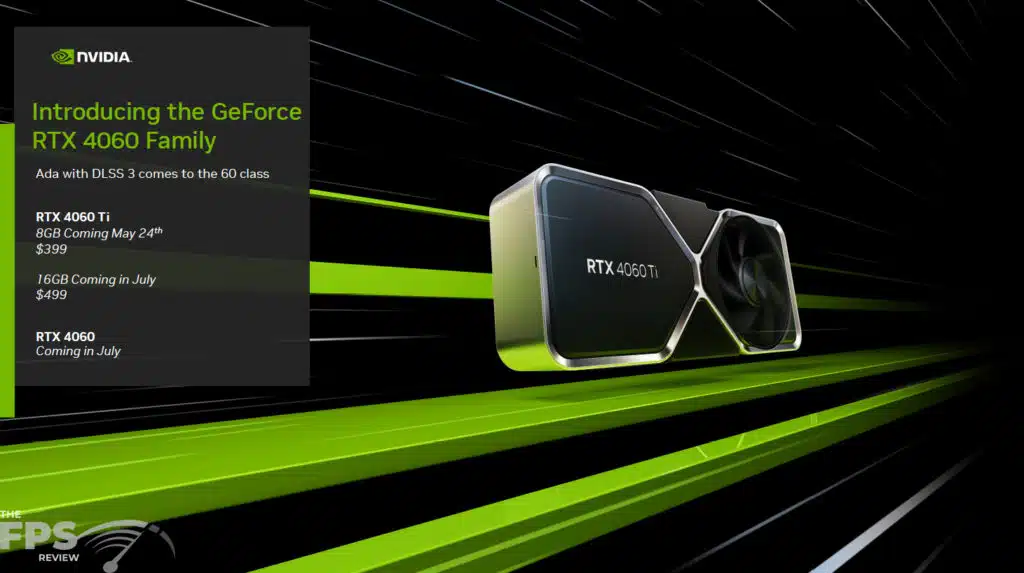
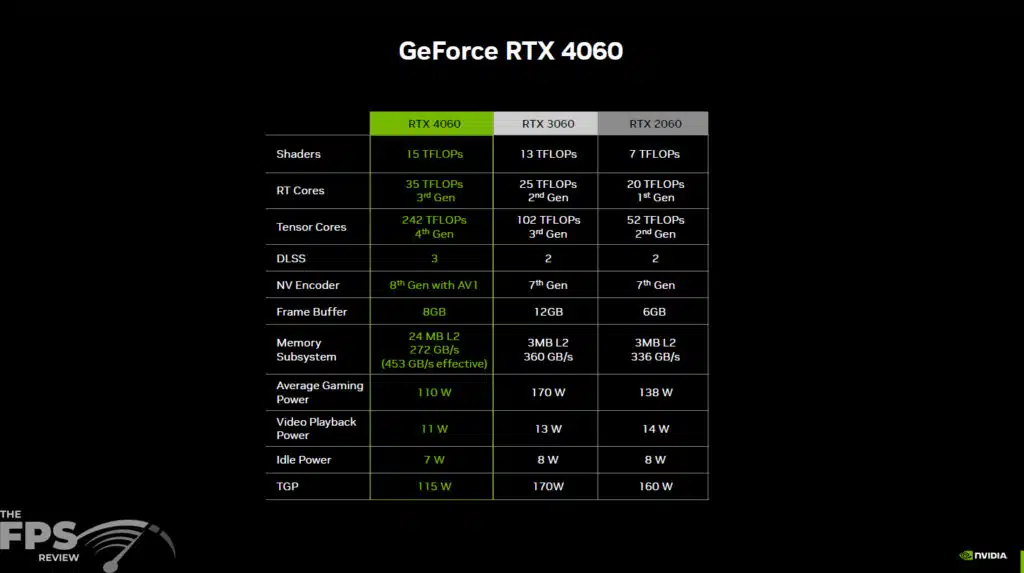
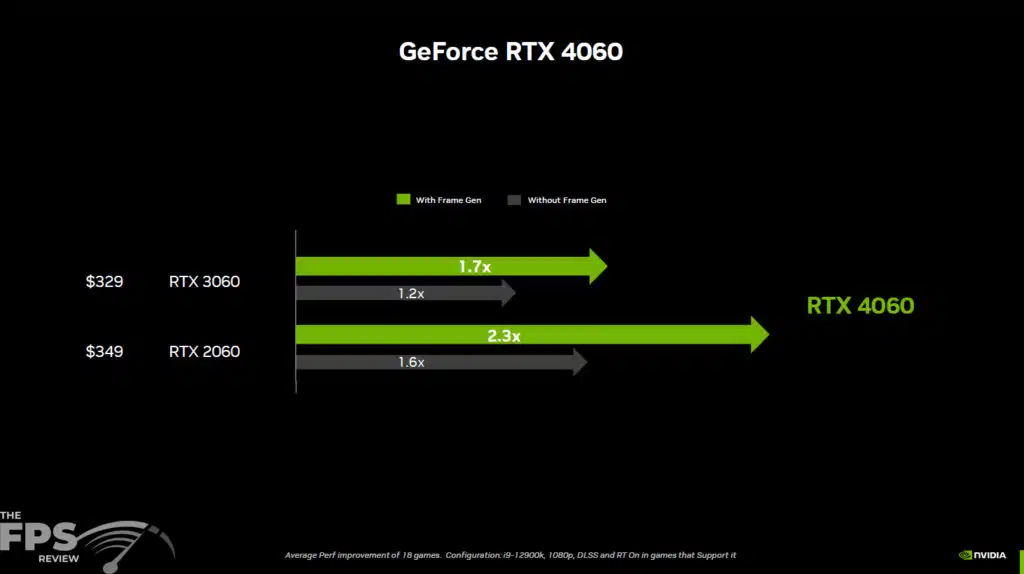
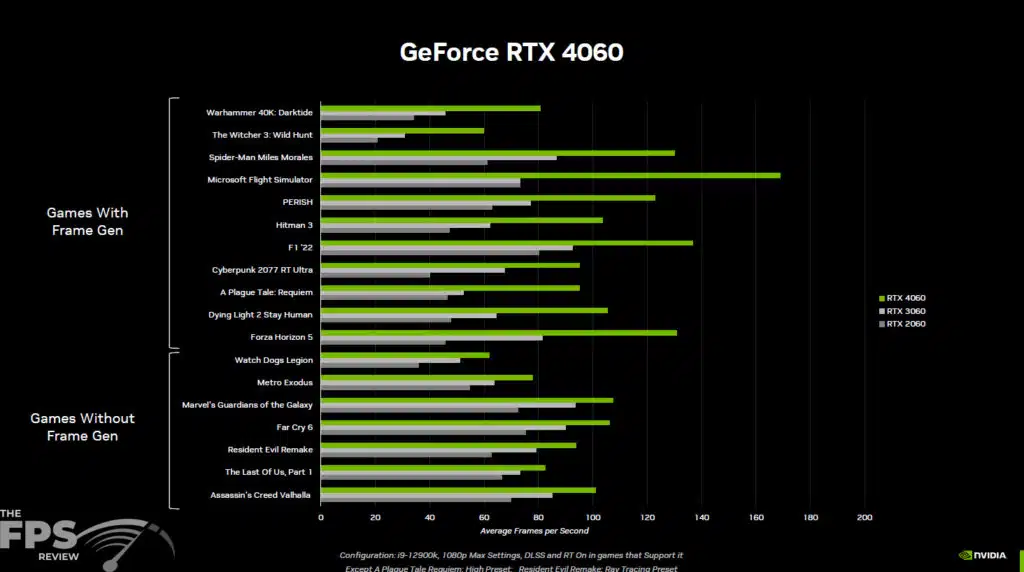
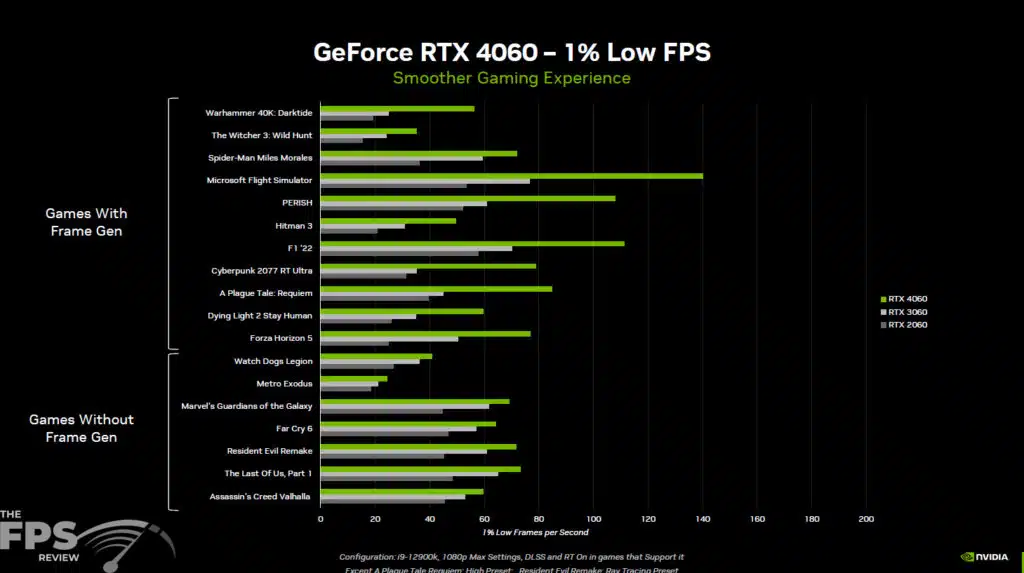
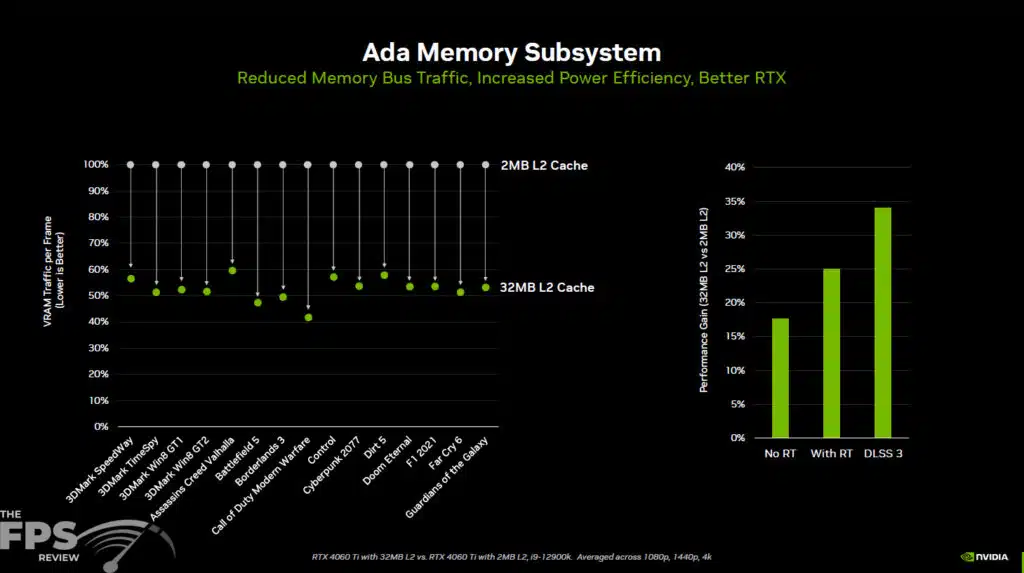
In the charts, NVIDIA is claiming around a 20% performance uplift from the GeForce RTX 3060 without DLSS, or up to 70% with DLSS 3 Frame Generation. NVIDIA is also saying the GeForce RTX 4060 should bring a 60% uplift versus the GeForce RTX 2060 without DLSS, or up to 230% with DLSS 3 Frame Generation. The GeForce RTX 4060 should also improve the 1% Low framerate versus the previous generations. According to the Steam Hardware Survey NVIDIA is seeing the GeForce RTX 4060 as an upgrade path for people with older cards such as the GTX 1650, GTX 1060, GTX 1050 Ti, RTX 2060, and RTX 3060.
DLSS
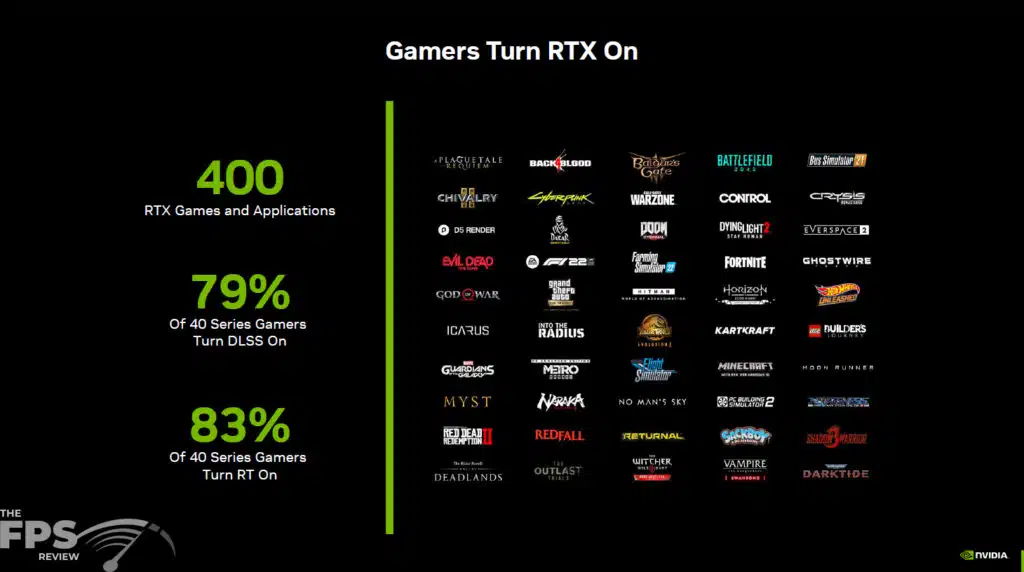
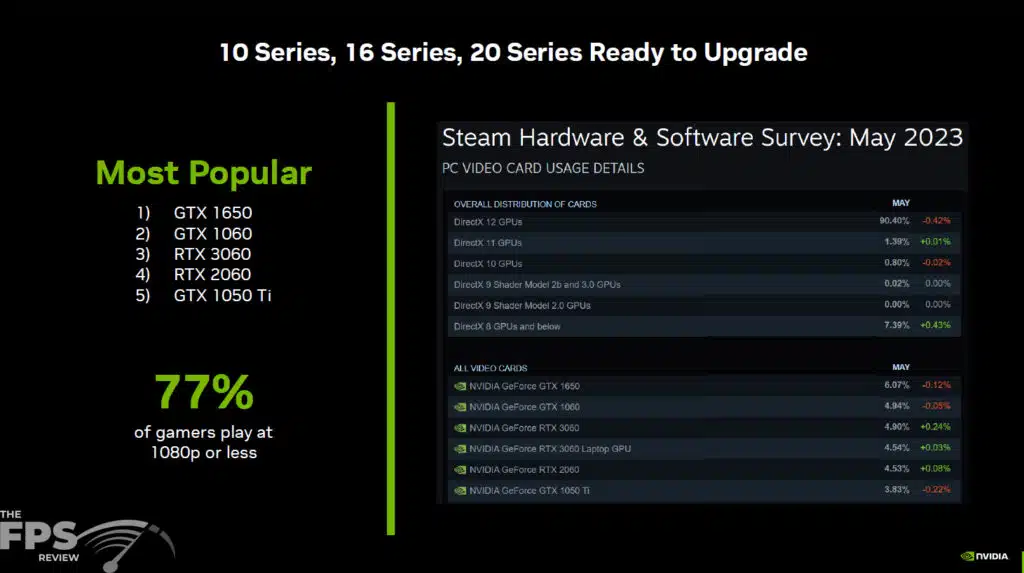
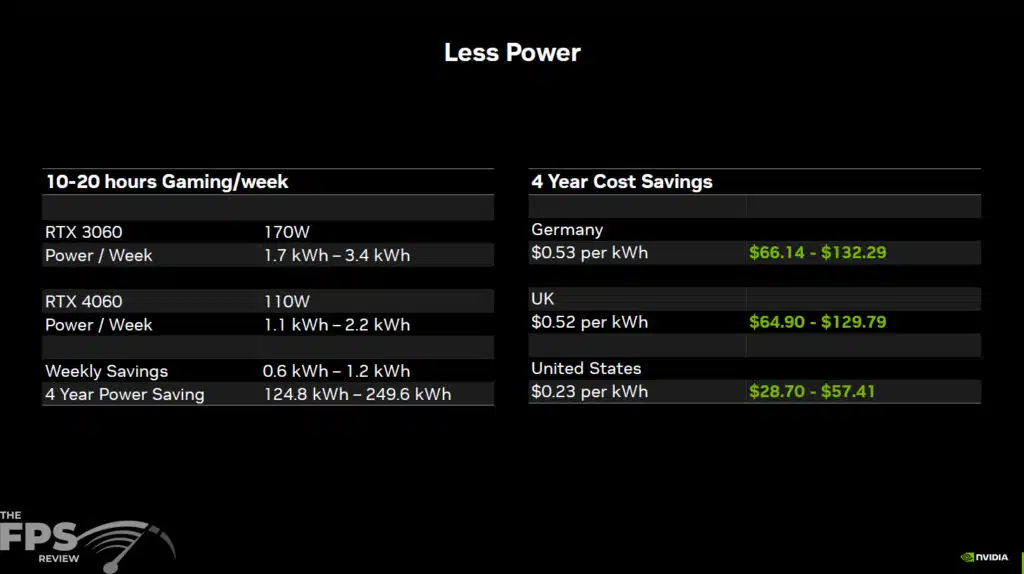
DLSS and DLSS 3 are also an important part of the GeForce RTX 4060, as well as being able to play with Ray Tracing enabled at 1080p in games. More and more gamers are turning on, or want to turn on Ray Tracing even on mainstream-level hardware. With the ever-growing catalog of games that support DLSS, that is possible on the GeForce RTX 4060 using upscaling like DLSS.
AD107
At its heart, the GeForce RTX 4060 is based on NVIDIA’s Ada Lovelace architecture on the AD107 GPU die (4N NVIDIA Custom Process), this is compared to the GeForce RTX 4060 Ti which uses AD106. That means this is a smaller die ultimately, and an incredibly power-efficient GPU. You will also find NVIDIA’s 4th Generation Tensor Cores and Optical Flow Accelerators on the new GeForce RTX 4060 Ti. This is necessary for the inclusion of DLSS 3.
The GeForce RTX 4060 also includes NVIDIA’s 3rd Generation RT Cores for better Ray Tracing performance. You also get the support of Shader Execution Reordering (SER) to improve ray tracing operations when utilized in games. The GeForce RTX 4060 also includes NVIDIA’s 8th Generation NVENC encoder with AV1 encoding support. All previous applications like NVIDIA Studio and support like NVIDIA Reflex and NVIDIA Broadcasting are also supported.
Cache
The GeForce RTX 4060 also utilizes the new larger L2 cache size inherent in the Ada Lovelace architecture, just like the GeForce RTX 4060 Ti. The GeForce RTX 4060 has 24MB of L2 cache, versus the GeForce RTX 4060 Ti with 32MB. The previous generation GeForce RTX 3060 12GB has only 3MB of L2 cache, so we are looking at quite an upgrade to 24MB with the GeForce RTX 4060 versus the previous generation.
Speeds and Feeds
The GeForce RTX 4060 utilizes 3 Graphics Processing Clusters, 12 Texture Processing Clusters, and 24 Streaming Multiprocessors. What this means is that the GeForce RTX 4060 has 3,072 CUDA Cores, 96 Texture Units, 48 ROPs, 96 (4th Gen) Tensor Cores, and 24 (3rd Gen) RT Cores. It will have a Base Clock of 1830MHz and a Boost Clock of 2460MHz. Memory consists of 8GB of GDDR6 at 17GHz on a 128-bit memory bus. This provides 272GB/s of actual memory bandwidth. It has 24MB of L2 cache.
The TGP is 115W for this video card, but the average gaming Wattage is only 110W. It also has a low idle power of 7W and AV1 video playable power usage of 11W. This runs on a PCIe Gen 4 x8 PCIe lanes connection. The required PSU is 550W.


